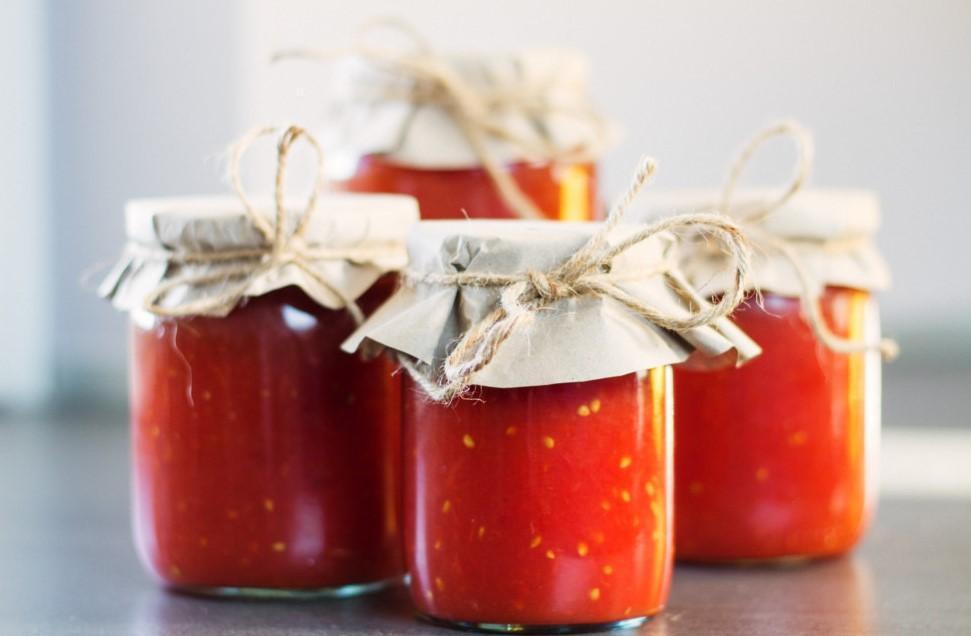
September is a special month. “Eylül” in Turkish, it is often associated with sadness; in poetry, literature and songs the word “Eylül” equals another Turkish word “Hüzün,” which is sometimes hard to translate. It can stand for melancholy, sadness, sorrow, and blues all in a pack, and it is like the essential keyword along with Eylül in love songs yearning for the lost lover or similar. September is the opposite of the bright and cheerful Spring months, marking the passage to winter, leaves falling turned reddish copper and the end of sunny summer. But there is another fact about September. It could well be the most hectic month of the year both in the rural countryside and in urban homes. There is not a single moment that can be wasted, it is harvest time in vineyards, the time for collecting the last sun-ripened batches of tomatoes, peppers and eggplants in vegetable gardens, and the time for preparing the winter provisions at homes.
When talking about winter provisions, in Turkish households, it is all red, which means that everything is about the color red, that is ripe tomatoes and red peppers. Recently there was a hilarious Twitter post that featured two photographs, one a romantic fall picture with falling leaves, the other a jar of tomato and pepper paste, and the title was: September elsewhere, September here! So true. For the home cook in this country, it is almost sinful not to prepare your own tomato conserve or sauce, or tomato and pepper-based spreads and pastes. Even in the news broadcasts, there are warnings on how to sterilize correctly the jars. The supermarkets stock jars and lids, coarse salt for pickling, and make discounts on bulk buying of the essential ingredients. The kitchens smell with the deep scent of simmering tomato, reduced to a red pulp, and roasted peppers in the oven. The rural countryside is luckier, all the work can be done in the open air, actually gardens are much better for such an activity where neighbors traditionally help each other collectively to prepare the winter provisions. Contrary to the September blues, such collective winter prep is cheerful and fun, and one cannot help but recite the song of the late Turkish singer Barış Manço, that kept repeating “Domates-Biber-Patlıcan,” “Tomato-Pepper-Eggplant,” a very upbeat even childish song which will never fade in Turkish memory.
The same craze is true for the Balkans. Every country in the Balkan territory has its own brand sauces they are proud of, and cannot do without. So, the same rush is true for countries like Bulgaria, Romania, Serbia, Macedonia, Croatia, and Greece, and jars are filled with red-colored delights of all sorts. Tomato and pepper sauces are very common in the Balkans, some of them have almost gained a national identity and have become an indispensable part of the table. While we have only tomatoes and sometimes a red pepper and tomato combo, Balkan countries tend to combine many tastes together, for instance, tomatoes, peppers and eggplants are inseparable, they all fit in a jar. In a sense, there is a complete garden harvest festival in a single jar. Sometimes peppers are first stir-fried in oil, sometimes they are grilled and roasted, the cellophane-like skin peeled and the smoky flesh sieved or chopped. The same is done with eggplants, they are char-grilled in the open air and their skin rubbed off, and the soft flesh mashed into a pulp and mixed with the rest of the ingredients. In the Balkans, such mixed sauces are very popular. A brief list includes flavors such as Lutenitsa, Ljutenica or Lutenica in Bulgaria, Macedonia and Serbia, Ajvar in Macedonia and former Yugoslavian countries, and Pindjur in Bosnian, Macedonian and Serbian cuisines. The first can include even carrots, Ajvarnot necessarily, pindjur depends. The list can be extended to Apetitka, Malidzano and Kyopolou, the latter two definitely with eggplants. A journey in Balkan sauces and spreads is adventurous and varied, the combination and recipes vary greatly, but one common thing is that they are all very delicious. Sometimes silky smooth, sometimes chunky, sometimes smoky, mildly hot, or fiercely spicy, they are delicious umami bombs, enjoyed as a dip, as a breakfast spread, or as part of a meze table, they are indispensable in kitchens. We have similar variations too, especially in Thrace, the Balkan part of the country, and in Bursa where many Turkish-origin Bulgarian immigrants have settled, but it is the simple tomato sauces that prevail. The ones with sauteed green peppers make a quick ready from the jar fix for the ubiquitous eggs with tomatoes and peppers, Menemen, a favorite of Turkish breakfast, or pure tomato sauces come to the rescue of home cook to add to stews and one-pot dishes. Today, despite the fact that commercial industrial sauces, spreads and pastes are readily available, people still have a preference for homemade ones or tend to buy from women’s cooperatives for a homely taste.
It is interesting that the fondness for such tomatoey and peppery sauces became so widespread in Balkan and Anatolian kitchens. After all, tomato and pepper, which came to Europe after the discovery of the American continent, have a history of only 150-200 years in this geography, and their cultivation and spread are much more recent. Here, we can say that they became abundant quite late, especially after the Second World War. Today we import tomato paste to 99 countries, but until about 70 years ago tomato was referred to as “Frenk” in some regions, indicating that it was a novelty, something that came from the West. Now it is no more a novelty, we even speak of local heritage varieties, as if they were indigenous crops. The arrival of tomatoes and red peppers was a red revolution in our kitchens, a culinary milestone, so much so that we even tie a regional or national identity with the jars filled with their sunny goodness.